Liveaboard
Luxury Liveaboard Raja Ampat
Book in advance! Price starting from USD 2,890 / pers Check AvailabilityLuxury Liveaboard Raja Ampat
Raja Ampat, located in the western part of West Papua, Indonesia, is a true paradise for divers. Because of its remote position, traveling and diving here is best experienced aboard the best liveaboards Raja Ampat has to offer. Opting for a luxury Liveaboard Raja Ampat ensures an unforgettable diving adventure in this breathtaking destination.
Raja Ampat, including the renowned Komodo National Park, is one of the most popular destinations for liveaboard diving trips in Indonesia, and for a good reason. This stunning archipelago boasts breathtaking landscapes, crystal-clear turquoise waters, and an extraordinary biodiversity that attracts divers worldwide. Choosing the best budget liveaboard for dive liveaboard trips in Raja Ampat, such as Raja Ampat Liveaboards, allows you to fully immerse yourself in the beauty of this natural wonderland while enjoying the utmost comfort and convenience.
A luxury liveaboard diving experience in Raja Ampat, known as the best Raja Ampat liveaboard, offers an unparalleled scuba diving experience, including exhilarating night dives, surrounded by unique underwater ecosystems. With its diverse aquatic environment, including vibrant coral reefs, rare fish species, and fascinating macro critters, Raja Ampat is a dream destination for scuba diving enthusiasts.
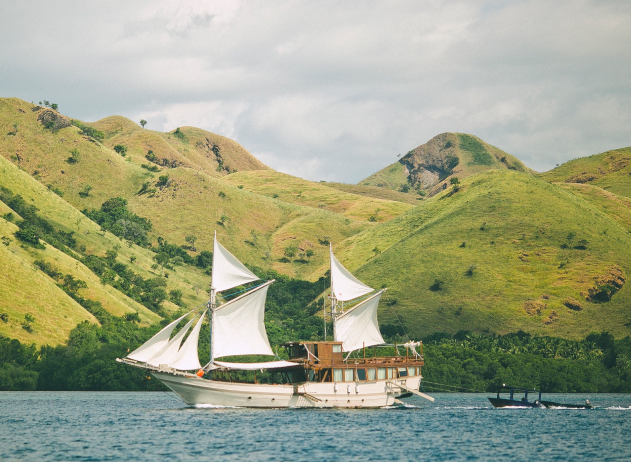
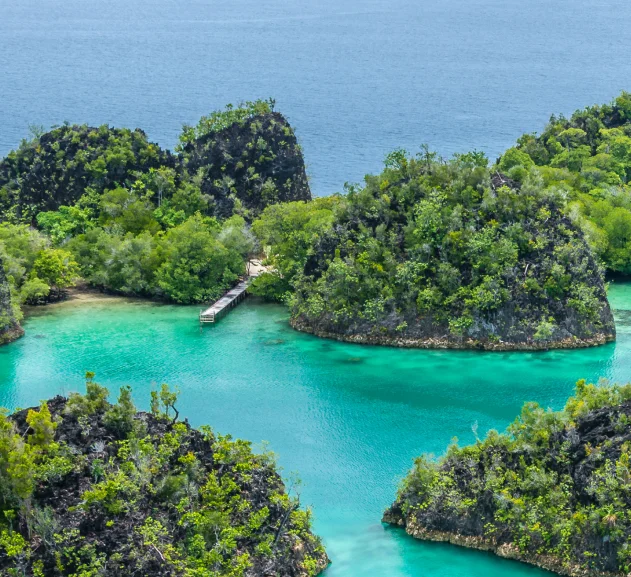
A Luxury Liveaboard Dive Experience
The liveaboard allows you to explore the best dive sites in the region, providing access to remote and pristine locations, including uninhabited islands, inaccessible to day trippers. You can embark on multiple exhilarating deep dives each day, guided by experienced instructors with extensive area knowledge, ensuring a safe and unforgettable scuba diving adventure.
Luxury liveaboard dive trips in Raja Ampat offer an exclusive and indulgent retreat. These vessels, including the traditional phinisi boat, are known for their luxury and comfort, designed with the discerning traveler in mind. Featuring spacious cabins, elegant lounges, and top-notch amenities, including a spacious dive deck and state-of-the-art dive gear, these luxury liveaboard dive trips enhance your experience.
Raja Ampat's Luxury Liveaboard Experience
Raja Ampat liveaboard luxury takes your experience to the next level, allowing you to relax and unwind in style amidst the breathtaking natural beauty of this archipelago. Picture yourself aboard a luxurious vessel, enjoying gourmet meals prepared by onboard chefs and taking advantage of various onboard facilities such as spas, jacuzzis, and sun decks.
With Raja Ampat liveaboard luxury dive trips equipped with top-of-the-line dive gear, you can immerse yourself in the lap of luxury while exploring the vibrant underwater world and pristine beaches of this tropical paradise. The personalized service provided by the attentive crew ensures that your every need is met, further enhancing your experience on this extraordinary dive journey of a lifetime with Raja Ampat liveaboard luxury. Embark on a journey of a lifetime with Raja Ampat liveaboard luxury dive trips and create unforgettable memories in this untouched oasis.
Luxury liveaboard scuba diving in Raja Ampat is the ultimate way for scuba divers to experience the breathtaking beauty of this remote Indonesian archipelago. Whether you are a seasoned diver or a nature enthusiast with an advanced open-water certification, unparalleled underwater exploration and luxurious accommodations make for an extraordinary scuba diving journey.
Indulge in the wonders of Raja Ampat as you scuba dive into its vibrant coral reefs, encounter rare marine species, and immerse yourself in the vibrant sea life. Scuba divers can bask in the lap of luxury aboard a Raja Ampat liveaboard trips, enjoying top-notch amenities and services tailored specifically for scuba diving enthusiasts.
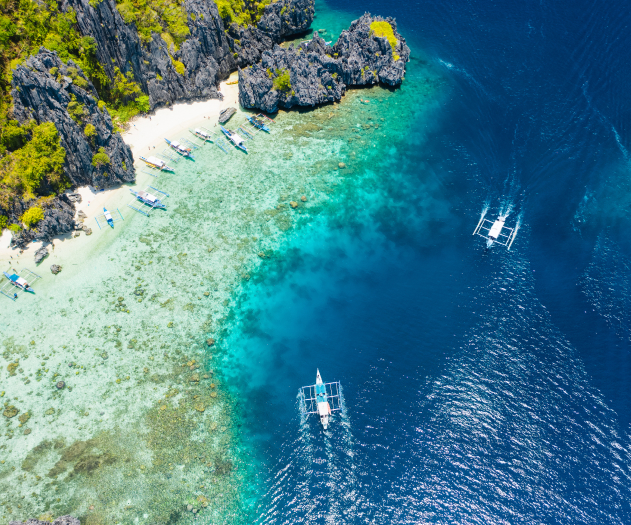
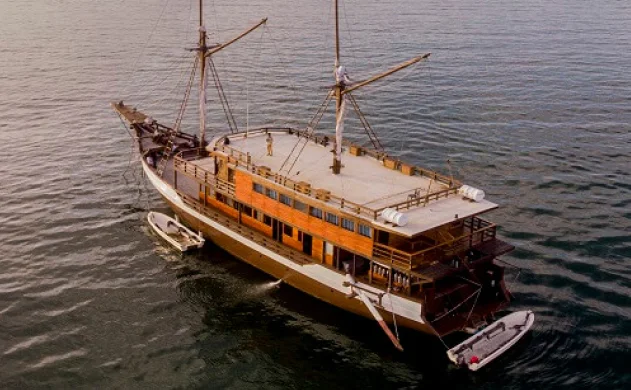
The best time to dive with Luxury Liveaboard Raja Ampat
The best time to dive trip in Raja Ampat is between October and April. During this time, the weather is dry and the visibility is at its best, with water temperatures ranging from 28 to 30 degrees Celsius (82F-86F). The monsoon season, which runs from May to September, can bring heavy rains and strong currents, making it less ideal for diving, but that’s the right time to visit our Luxury liveaboard komodo.
Liveaboards, including Raja Ampat liveaboards, are the main diving options in Raja Ampat, but there are a couple of dive resorts available as well. The dive resorts have access to almost all of the North & Central dive sites using speedboats, but they are not able to reach the south Raja Ampat, famously known as Misool.
What to see in Raja Ampat
One of the best ways to fully explore and experience the breathtaking underwater world of Raja Ampat and the Banda Sea, known as the heart of the Coral Triangle, is through a deep dive with diving liveaboards in Raja Ampat. These specialized diving vessels provide divers and underwater photographers with the unique opportunity to embark on extended diving trips, immersing themselves in the diverse marine life and awe-inspiring coral reefs. With a deep dive, enthusiasts can delve even further into the depths, uncovering hidden treasures and discovering the mesmerizing beauty that lies beneath the surface.
With some of the most dive sites in the world, Raja Ampat offers an unrivaled dive safari adventure for both divers and photographers. From encountering majestic manta rays and gentle whale sharks to witnessing the mesmerizing sight of schools of barracuda and trevally, divers and photographers in Raja Ampat can truly indulge in the wonders of this biodiverse paradise. With over 1,500 species of fish, including coral fish, and 600 species of coral, Raja Ampat’s vast array of dive sites ensures a thrilling and diverse underwater experience.
The Manta Rays seen here are both reef and oceanic Mantas which are really special to see. Exploring the area with Raja Ampat liveaboard luxury and embarking on a journey to explore Raja Ampat, you will discover several different types of coral, including hard and soft corals, as well as a variety of colorful sponges. These coral reefs, renowned worldwide for their breathtaking beauty, are also home to a plethora of invertebrates, such as crabs, shrimps, and a wide range of sea stars and urchins. The opportunity to visit Raja Ampat is an experience like no other, offering a chance to immerse yourself in the mesmerizing underwater world of this stunning archipelago.
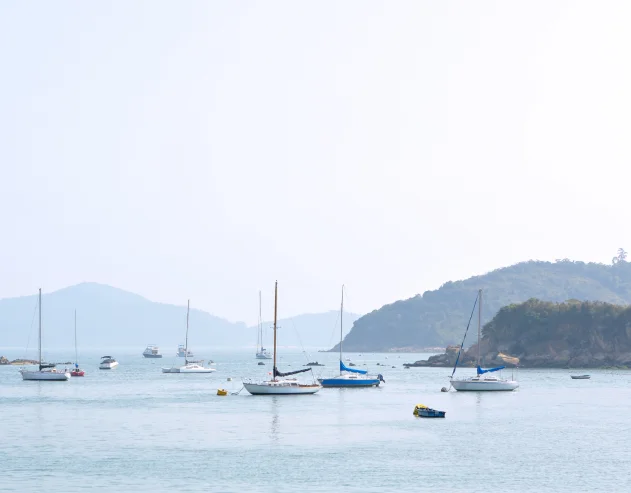
Top 5 Most Popular Dive Sites of Luxury Liveaboard Raja Ampat
Below is a list of some of the most popular dive sites in Raja Ampat:
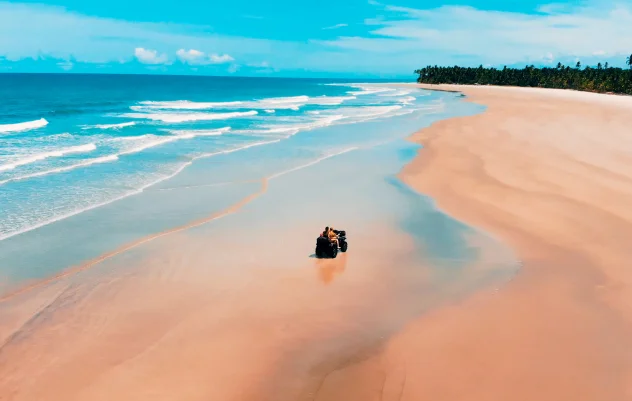
Manta Sandy
As divers submerge into the vibrant underwater world of Manta Sandy, one of the best Raja Ampat diving sites, they are immersed in a realm where time seems to stand still. This site is known for its large population of manta rays, which can often be seen swimming in the currents around the dive site. It offers a breathtaking spectacle as these magnificent creatures gracefully glide through the water, their wide wingspan captivating divers with their sheer elegance.
It is truly a mesmerizing experience to witness these gentle giants effortlessly maneuvering through the currents, creating an awe-inspiring display of nature’s beauty. The symbiotic relationship between these majestic rays and the marine ecosystem becomes evident at Manta Sandy, one of the most captivating and great diving sites in Raja Ampat.
Cape Kri
Diving at Cape Kri in Raja Ampat is truly the best diving experience. This dive spot in Raja Ampat is known for its large schools of fish, including barracuda and trevally. It also offers the opportunity to see a variety of reef sharks, including grey reef sharks and white-tip reef sharks, as you are engulfed in a vibrant underwater world teeming with life. The sight of countless barracuda and trevally moving in synchronized harmony is awe-inspiring, creating a spectacle that is etched in your memory forever.
As you explore the depths of Raja Ampat, you may encounter the graceful presence of grey and white-tip reef sharks, gliding effortlessly through the turquoise waters. Their sleek forms and powerful presence add a touch of excitement to the dive, making Cape Kri in Raja Ampat one of the must-visit dive sites for divers seeking an unforgettable encounter with marine life.
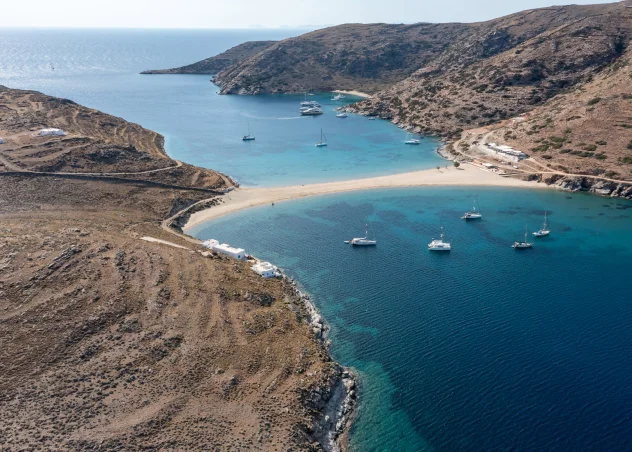
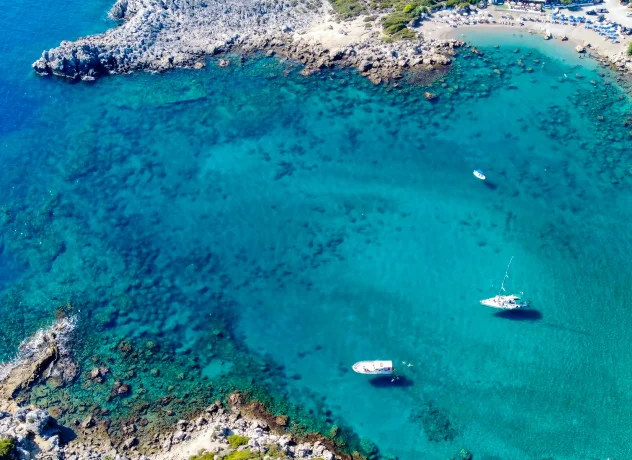
Sauwandarek
Sauwandarek presents itself as an ultimate haven for diving enthusiasts, surpassing even the renowned attractions of Raja Ampat. This exceptional dive site offers a shallow exploration that showcases an extraordinary coral reef of unparalleled beauty. Here, one can witness the grandeur of colossal turtles and captivating clams, which captivate the hearts of underwater enthusiasts. As you venture deeper into the pristine waters, an awe-inspiring realm for diving unfolds before your eyes, featuring a vibrant coral tapestry stretching as far as the eye can see. With its diverse marine life and breathtaking underwater landscapes, Sauwandarek is undeniably one of the most sought-after dive sites in the world.
The reef comes alive with a kaleidoscope of colors, teeming with diverse marine life that finds solace within its embrace. Graceful giant turtles elegantly glide through the currents, instilling a profound sense of wonder and reverence. The presence of colossal clams nestled among the coral formations adds a surreal touch of magnificence to this underwater wonderland. Each dive in Sauwandarek unravels its hidden treasures, leaving divers with cherished memories and an insatiable desire to revisit its unmatched splendor.
Sardine Reef
Sardine Reef is renowned for its vast schools of sardines, gracefully gliding and diving through the surrounding currents. It is also an ideal location to witness a diverse range of reef fish, including the vibrant anthias and wrasse species. The vibrant marine life at Sardine Reef extends far beyond the sardines themselves. As you venture into the crystal-clear waters, you will be greeted by a mesmerizing tapestry of colors, courtesy of the myriad species of reef fish that dive and inhabit this extraordinary place.
The lively ambiance, created by the abundant array of marine creatures, makes Sardine Reef an enchanting destination for seasoned divers and curious snorkelers, promising an enthralling and unforgettable aquatic expedition.
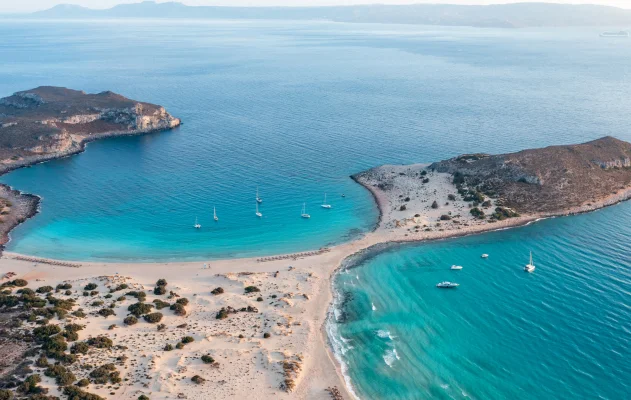
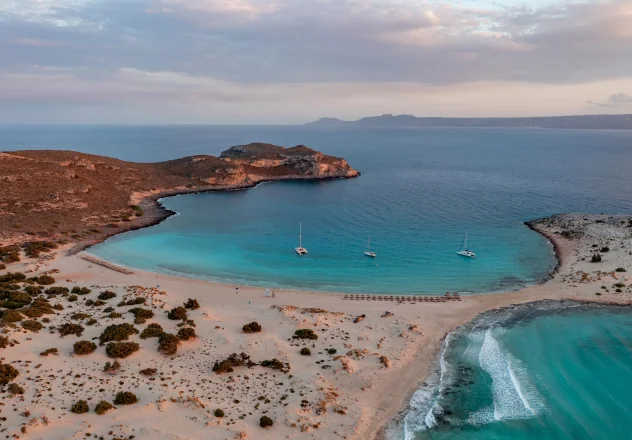
Blue Magic
Immerse yourself in the breathtaking beauty of drift diving in the Blue Magic Reef, a mesmerizing expanse of coral teeming with abundant marine life. Explore this captivating underwater world where deep coral formations create a kaleidoscope of colors, and aquatic creatures move in perfect harmony. As you descend into the azure depths, you’ll be greeted by bustling schools of fish, their shimmering bodies dancing in synchronized motion, all while experiencing the thrill of drift diving through the currents.
Gracefully gliding through this underwater paradise is the majestic Wobbegong Shark, its unique patterns blending seamlessly with the vibrant corals. And if luck is on your side, you may witness the awe-inspiring spectacle of Manta Rays elegantly soaring through the currents, their majestic wings spanning wide. The Blue Magic Reef truly encapsulates the enchantment of the ocean, beckoning divers and nature enthusiasts to witness its ethereal allure and become immersed in a world of wonder beneath the waves. With each plunge into the depths, diving adventurers discover new treasures and encounter fascinating marine creatures.
What are the nice landmarks to visit in Raja Ampat
Visiting Raja Ampat is not only for the diving, but also for the beautiful scenery that the small islands can provide when hiking. Here are a few landmarks that we visit during our luxury liveaboard raja ampat.
Penemu
Penemu Island, nestled within the captivating archipelago of Raja Ampat, holds a special place in the hearts of both travelers and adventurers. It is an essential destination for all liveaboards in the region, offering their guests an opportunity to capture that perfect Instagram-worthy picture. From the summit of Penemu Island, one is greeted with an astonishing vista encompassing the expansive Raja Ampat waters and surrounding islands.
This breathtaking view is etched into the memory, serving as a testament to the island’s unrivaled beauty. Penemu Island also provides unforgettable land excursions, allowing visitors to explore its lush forests, discover hidden coves, and encounter unique wildlife species. The convergence of crystal-clear turquoise waters and verdant green islands creates an awe-inspiring masterpiece of nature’s magnificence. Armed with their cameras, visitors seize the essence of this extraordinary sight, immortalizing it on their Instagram feeds to share with the world.
Penemu Island, the crowning jewel of Raja Ampat, leaves an indelible mark on all fortunate enough to witness its splendid grandeur.
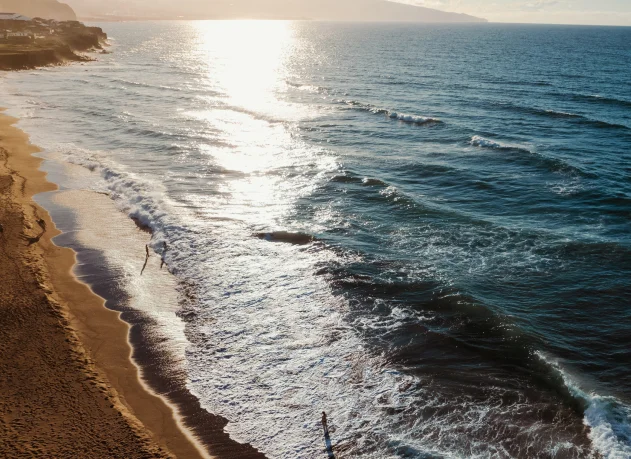
Love Lake
Nestled in the southern region of Raja Ampat, Love Lake is a fantastic small lagoon that has evolved into the shape of a heart, rendering it a captivating attraction. To fully immerse themselves in the beauty of Love Lake, visitors must embark on a moderately challenging 30-minute hike, ascending the specially constructed staircase provided by the locals.
An entrance ticket is required to access this enchanting site. Upon reaching the pinnacle of the staircase, a breathtaking panorama unfolds before the eyes, justifying the exertion involved. Love Lake rests serenely amidst a verdant expanse, its crystalline turquoise waters forming a perfect heart-shaped oasis.
The tranquil ambiance and the placidity of the lake combine to create an enthralling atmosphere, making it a perfect haven for couples and nature enthusiasts. The shimmering waters of Love Lake reflect the vibrant hues of the surrounding foliage, enhancing its picturesque allure. Explorers of this area can revel in the diversity of flora and fauna that thrive within this ecosystem, further accentuating the charm of this place.
Love Lake truly encapsulates the essence of romance and the natural marvel, leaving an indelible impression on all fortunate enough to experience its splendor.
The Love Lake can be visited only on the South – Central itinerary of Raja Ampat.
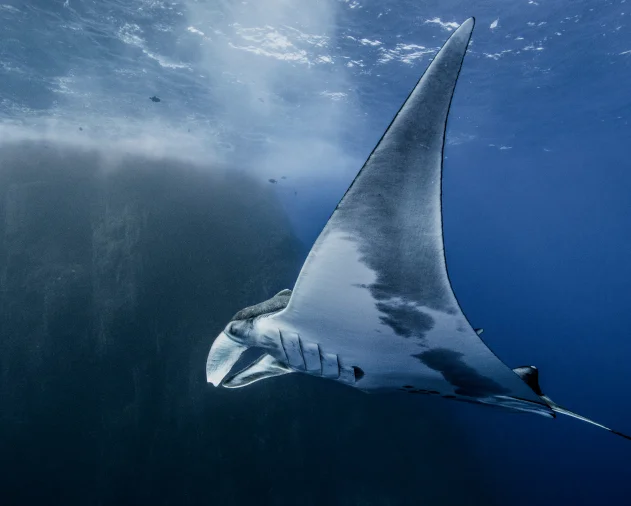
Jellyfish Lake
Swimming in Jellyfish Lake offers an incredible opportunity to witness the mesmerizing beauty of these gentle creatures up close. The lack of stinging tentacles allows visitors to swim freely among the jellyfish without fearing injury. It’s a truly surreal experience to glide through the water alongside these graceful creatures, observing their ethereal movements and vibrant colors. The tranquility of Jellyfish Lake adds to the overall enchantment of the place. Surrounded by lush greenery and towering limestone cliffs, the lake provides a serene and idyllic setting for a unique adventure. Snorkelers and divers can immerse themselves in the calm waters, marveling at the abundance of jellyfish that inhabit the lake.
Visiting Jellyfish Lake is not just an opportunity to witness the wonders of nature but also a chance to foster a deeper appreciation for the delicate balance of ecosystems. It serves as a reminder of the need to protect and preserve our natural environment, ensuring the continued existence of such remarkable places for generations to come. So, dive into Jellyfish Lake and be prepared to be captivated by the gentle beauty beneath the surface.

Misool Island
Misool Island is a breathtaking paradise located in Raja Ampat, Indonesia. Its pristine beauty and diverse marine ecosystem make it a must-visit destination for nature enthusiasts and avid divers. The island is renowned for its stunning turquoise waters, lush greenery, and dramatic karst formations. Exploring Misool’s vibrant coral reefs while diving is a mesmerizing experience, with a kaleidoscope of colorful fish, wobbegong sharks, and majestic whale sharks gracefully swimming through these waters. These gentle giants, the whale sharks, add to the amazing marine life that calls Misool their home. The island’s rich biodiversity and conservation efforts have earned it recognition as a UNESCO World Heritage site, further highlighting its significance as a global natural treasure.
The island offers a sense of seclusion and tranquility that is hard to find elsewhere. With its limited infrastructure and low population, it provides a serene escape from the hustle and bustle of modern life. Visitors can relax on pristine white sandy beaches surrounded by towering limestone cliffs and lush tropical forests. The absence of crowds and the untouched nature make it an ideal destination for those seeking solitude and reconnecting with nature.
The island known as Misool is where you’ll find the Misool Eco Resort, a sustainable paradise dedicated to conservation. This unique resort is constructed above the water, seamlessly integrating with the natural surroundings. Its opulent accommodations and diverse array of activities, such as snorkeling, kayaking, and cave exploration, ensure guests have a memorable stay. Moreover, the resort actively supports the local community by creating jobs and advocating for preserving marine ecosystems. By choosing the Misool Eco Resort, visitors can indulge in a luxurious getaway that embraces environmental stewardship.
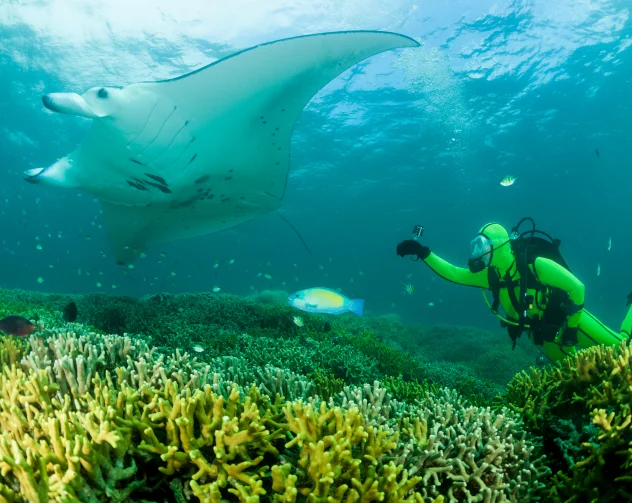
Frequently Ask Question
Everything you need to know about the product and billing. Can’t find the answer you’re looking for? Please chat to our friendly team.
See More FAQs